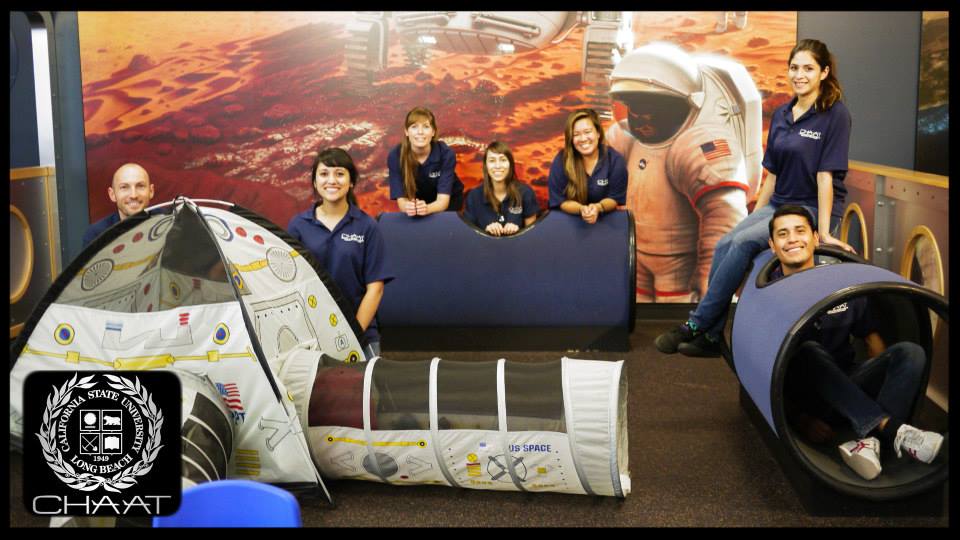Center for Human Factors in Advanced Aeronautics Technologies
Announcements
- Congratulations to Ha Nguyen, Megan Mitchell, Christian Schmitz, Jessica Mar, and Shraddha Swaroop, who were awarded Summer 2022 internships at NASA Ames Research Center.
- Congratulations to Destiny Gough, Shraddha Swaroop, and Megan Mitchell, 2022 Boeing Scholarship winners.
- We are pleased to announce that Dr. David Illingworth will be joining the Human Factors faculty in Fall 2022. Dr. Illingworth is currently a Postdoctoral Fellow at University of Maryland, and received his Ph.D. from Georgia Institute of Technology. His research interests included decision making, decision support systems and information displays.
The Center for Human Factors in Advanced Aeronautics Technologies (CHAAT) at California State University, Long Beach (CSULB) is researching the impacts of future automated tools and new operating concepts on human operators in our National Airspace System (NAS). CHAAT researchers address a major bottleneck preventing expansion of our NAS: The human operator.

Human factors graduate students posing for a photo.
CHAAT performs ongoing research to measure human performance in complex systems such as the Next Generation Airspace Transportation System (NextGen). We also participate in the training of the future workforce, in aeronautics and other NASA-related disciplines, through the training of students in human factors.
Ongoing Projects
CHAAT researchers are currently working on the development of tools for measuring situation awareness and workload in NextGen airspace environments, investigation of training methods for current and future air traffic controllers, and research of novel input devices and display formats for NextGen operators. For more information about our ongoing projects, check out our current research page.
Outreach Programs
The CHAAT team works to promote the discipline of human factors and STEM (Science, Technology, Engineering, and Mathematics), both locally and nationwide, to students with diverse backgrounds, interests, and grade levels. Some of our outreach programs include:
Engineering Girls Internship (EGI) Program (Ongoing) 
- The Engineering Girls Internship (EGI) Program is a university outreach program designed to inspire the next generation of female engineers and scientists. Through CHAAT, the Engineering Girls Internship reflects a collaboration between the College of Engineering and the College of Liberal Arts at California State University, Long Beach. The program incorporates NASA educational content to introduce students to the important work done by professional engineers and scientists dealing with space exploration, air traffic safety, and scientific research that greatly influence the future of our nation.
- EGI begins accepting applications in February of each year for the summer program. For more information, visit the Engineering Girls Internship Program’s “How to Apply” Page or email coe-girlsinternship@csulb.edu
NASA Learning Experience (Past Event, July 2010) 
- The NASA Learning Experience (NLE) trip was part of California State University, Long Beach’s Women-in-Engineering Outreach Program and the Center for Human Factors in Advanced Aeronautics Technologies’ growing efforts to encourage young girls to consider future careers in engineering. The trip took place in July, 2010, and was an opportunity for underrepresented students to visit the Kennedy Space Center (located in Florida) for an education forum, hands-on activities, and a tour of the center. Activities included NASA content-based educational activities, exposure to the excitement of the space program, and minority role models. Tours included tours of the Saturn V rocket display, International Space Station centers and the Astronauts Hall of Fame.
Summer of Innovation (Past Event- August 2010)
- As part of the Summer of Innovation in 2010, we took 50 middle school girls on a trip to NASA Dryden to participate in a “mission control” event.
